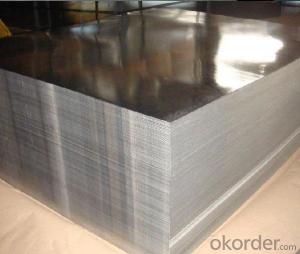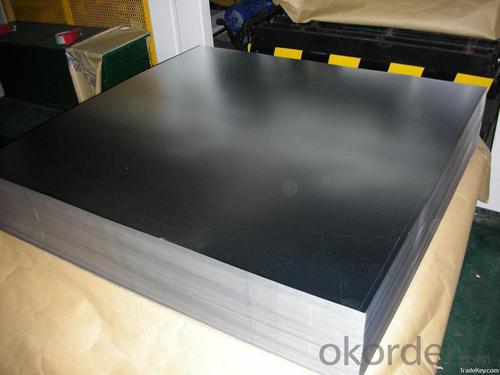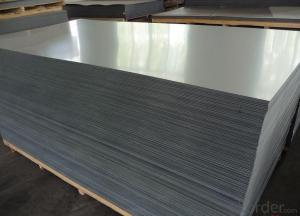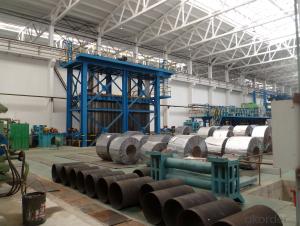Electrolytic Tinplate in Sheets for Foods Packaging
- Loading Port:
- Tianjin
- Payment Terms:
- TT OR LC
- Min Order Qty:
- 25 m.t
- Supply Capability:
- 7000 m.t/month
OKorder Service Pledge
OKorder Financial Service
You Might Also Like
1.Structure of Electrolytic Tinplate in Sheets for Foods Packaging Description
Electrolytic Tin Plate Coils and Sheets for Foods Metal Packaging, is one thin steel sheet with a coating of tin applied by electrolytic deposition. Tinplate made by this process is essentially a sandwich in which the central core is strip steel. This core is cleaned in a pickling solution and then fed through tanks containing electrolyte, where tin is deposited on both sides. As the strip passes between high-frequency electric induction coils, it is heated so that the tin coating melts and flows to form a lustrous coat.
2.Main Features of the Electrolytic Tinplate in Sheets for Foods Packaging
Appearance – Electrolytic Tin Plate is characterized by its beautiful metallic luster. Products with various kinds of surface roughness are produced by selecting the surface finish of the substrate steel sheet.
Paintability and printability – Electrolytic Tin Plates have excellent paintability and printability. Printing is beautifully finished using various lacquers and inks.
Formability and strength – Electrolytic Tin Plates have got very good formability and strength. By selecting a proper temper grade, appropriate formability is obtained for different applications as well as the required strength after forming.
Corrosion resistance – Tinplate has got good corrosion resistance. By selecting a proper coating weight, appropriate corrosion resistance is obtained against container contents. Coated items should meet 24 hour 5 % salt spray requirement.
Solderability and weldability – Electrolytic Tin Plates can be joined both by soldering or welding. These properties of tinplate are used for making various types of cans.
Hygienic – Tin coating provides good and non toxic barrier properties to protect food products from impurities, bacteria, moisture, light and odours.
Safe – Tinplate being low weight and high strength makes food cans easy to ship and transport.
Eco friendly – Tinplate offers 100 % recyclability.
Tin is not good for low temperature applications since it changes structure and loses adhesion when exposed to temperatures below – 40 deg C.
3.Electrolytic Tinplate in Sheets for Foods Packaging Images
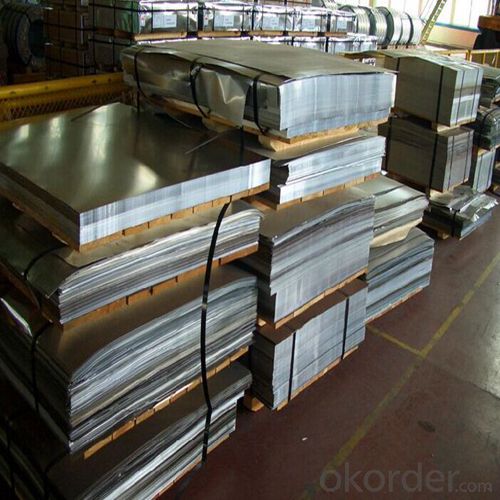


4.Electrolytic Tinplate in Sheets for Foods Packaging Specification
Standard | ISO 11949 -1995, GB/T2520-2000,JIS G3303,ASTM A623, BS EN 10202
|
Material | MR,SPCC |
Thickness | 0.15mm - 0.50mm |
Width | 600mm -1150mm |
Temper | T1-T5 |
Annealing | BA & CA |
Coil Inner Diameter | 508mm |
Weight | 6-10 tons/coil 1~1.7 tons/sheets bundle |
Passivation | 311 |
Oil | DOS |
Surface | Finish,bright,stone,matte,silver |
5.FAQ of Electrolytic Tinplate in Sheets for Foods Packaging
- How are the Electrolytic Tin Plates specified?
The Electrolytic Tin Plates are specified as per the steel base, extent of tempering, the coating weight, annealing method and the surface finish.
- How many types there are for base steels?
The base steels are of three types: Type MR, L, D
-What your tinplate material is used for ?
Tinplate is widely used for the packaging of products. Such as food cans,
beverage cans, pet cans, closures, general line cans and so on.
Printed Tinplate is offered!!
-How to place .an order or contact you ?
Please send us Email. we will give you a quick response in seconds .
- How is your quality ?
All our quality is prime even the secondary quality . We have many years experience
In this field with serious quality control standard . Advanced equipment, We welcome your visit to our factory .
- Q: How does tinplate packaging handle exposure to moisture?
- Tinplate packaging is highly resistant to moisture and provides an effective barrier against it. The tin coating on the steel substrate prevents direct contact between the metal and moisture, protecting the contents inside. This makes tinplate packaging suitable for various products, including food and beverages, as it maintains their quality and prevents spoilage caused by moisture.
- Q: How does tinplate compare to paperboard in terms of packaging applications?
- Tinplate and paperboard have different characteristics and are suitable for different packaging applications. Tinplate offers excellent protection against moisture, light, and oxygen, making it ideal for packaging perishable goods or products that require long shelf life. It is also more durable and can withstand rough handling during transportation. On the other hand, paperboard is more lightweight and cost-effective, making it a popular choice for packaging non-perishable items like cereal boxes or cosmetic packaging. Additionally, paperboard is more easily customizable and environmentally friendly, as it can be recycled. Ultimately, the choice between tinplate and paperboard depends on the specific packaging requirements and the nature of the product being packaged.
- Q: How does tinplate perform in terms of chemical resistance?
- Tinplate generally offers good chemical resistance due to the protective layer of tin that is applied to its surface. This tin coating acts as a barrier against many corrosive substances, preventing them from coming into direct contact with the underlying steel. However, prolonged exposure to highly acidic or alkaline environments can potentially deteriorate the tin coating and compromise the chemical resistance of tinplate.
- Q: Can tinplate be used for packaging household cleaning products?
- Yes, tinplate can be used for packaging household cleaning products. It is a durable and versatile material that provides excellent protection and preservation for such products. Additionally, tinplate is resistant to corrosion, making it suitable for storing various cleaning agents safely.
- Q: How can tinplate be identified?
- Mainly to see whether the surface is smooth, whether there are holes in the surface, there are no wave edges, scratches, tin is enough, the size is not in tolerance Wai?. Wait a lot. Specific problems are analyzed in detail, and there are many aspects of assessing quality problems, and so on.
- Q: What are the potential health risks associated with tinplate packaging?
- The potential health risks associated with tinplate packaging are primarily related to the presence of bisphenol A (BPA), a chemical used in the lining of some tin cans. BPA can potentially leach into the food or beverage stored in the can, and prolonged exposure to BPA has been linked to various health issues, including reproductive disorders, cardiovascular problems, and certain types of cancer. However, it's important to note that many countries have regulations in place to limit BPA levels in packaging materials, and alternative lining materials are being developed to minimize these risks.
- Q: How does tinplate packaging contribute to product protection during shipping?
- Tinplate packaging contributes to product protection during shipping by providing a durable and sturdy material that acts as a barrier against external elements. It offers resistance to impacts, ensuring that the product inside remains safe and intact. Additionally, tinplate packaging has excellent corrosion resistance, preventing damage caused by moisture or humidity during transportation. This protective feature helps in preserving the quality and extending the shelf life of the product, reducing the risk of damage or spoilage.
- Q: How does tinplate compare to plastic packaging in terms of sustainability?
- Tinplate packaging generally has a higher sustainability profile compared to plastic packaging. Tinplate is a recyclable material that can be reused multiple times without losing its properties. It has a low carbon footprint, as it requires less energy to produce compared to plastic. Additionally, tinplate can be easily separated from other waste during recycling processes, making it more efficient for recycling systems. On the other hand, plastic packaging often ends up in landfills or as litter, taking hundreds of years to decompose and causing environmental harm. However, it is important to note that the sustainability of tinplate packaging also depends on factors like the energy source used during production and recycling rates in a particular region.
- Q: How does tinplate contribute to the sterility of medical equipment?
- Tinplate contributes to the sterility of medical equipment by providing a protective barrier that prevents contamination. It is highly resistant to corrosion and can withstand high temperatures during sterilization processes, ensuring that the equipment remains free from microorganisms. Additionally, tinplate's smooth surface prevents the growth of bacteria and facilitates easy cleaning, further enhancing the sterility of medical instruments.
- Q: What are the benefits of using tinplate for coins?
- There are several benefits of using tinplate for coins. Firstly, tinplate is a durable material that can withstand wear and tear, making it ideal for coins that are constantly being handled and circulated. Additionally, tinplate is rust-resistant, ensuring that the coins maintain their appearance and quality even in humid or wet conditions. Another advantage is that tinplate is relatively inexpensive compared to other materials, making it a cost-effective choice for producing coins in large quantities. Lastly, tinplate is highly recyclable, which aligns with the growing emphasis on sustainability and environmental consciousness in coin production.
Send your message to us
Electrolytic Tinplate in Sheets for Foods Packaging
- Loading Port:
- Tianjin
- Payment Terms:
- TT OR LC
- Min Order Qty:
- 25 m.t
- Supply Capability:
- 7000 m.t/month
OKorder Service Pledge
OKorder Financial Service
Similar products
Hot products
Hot Searches
Related keywords


